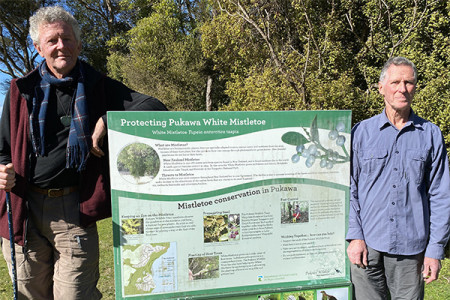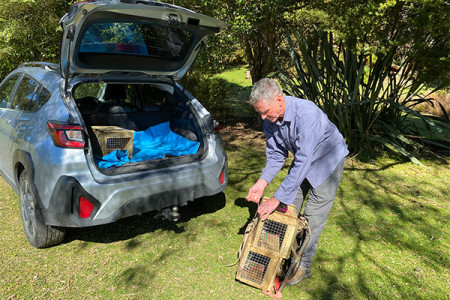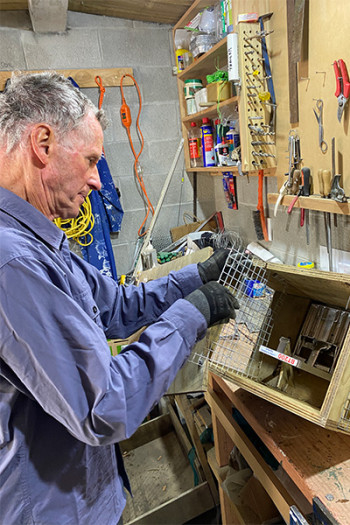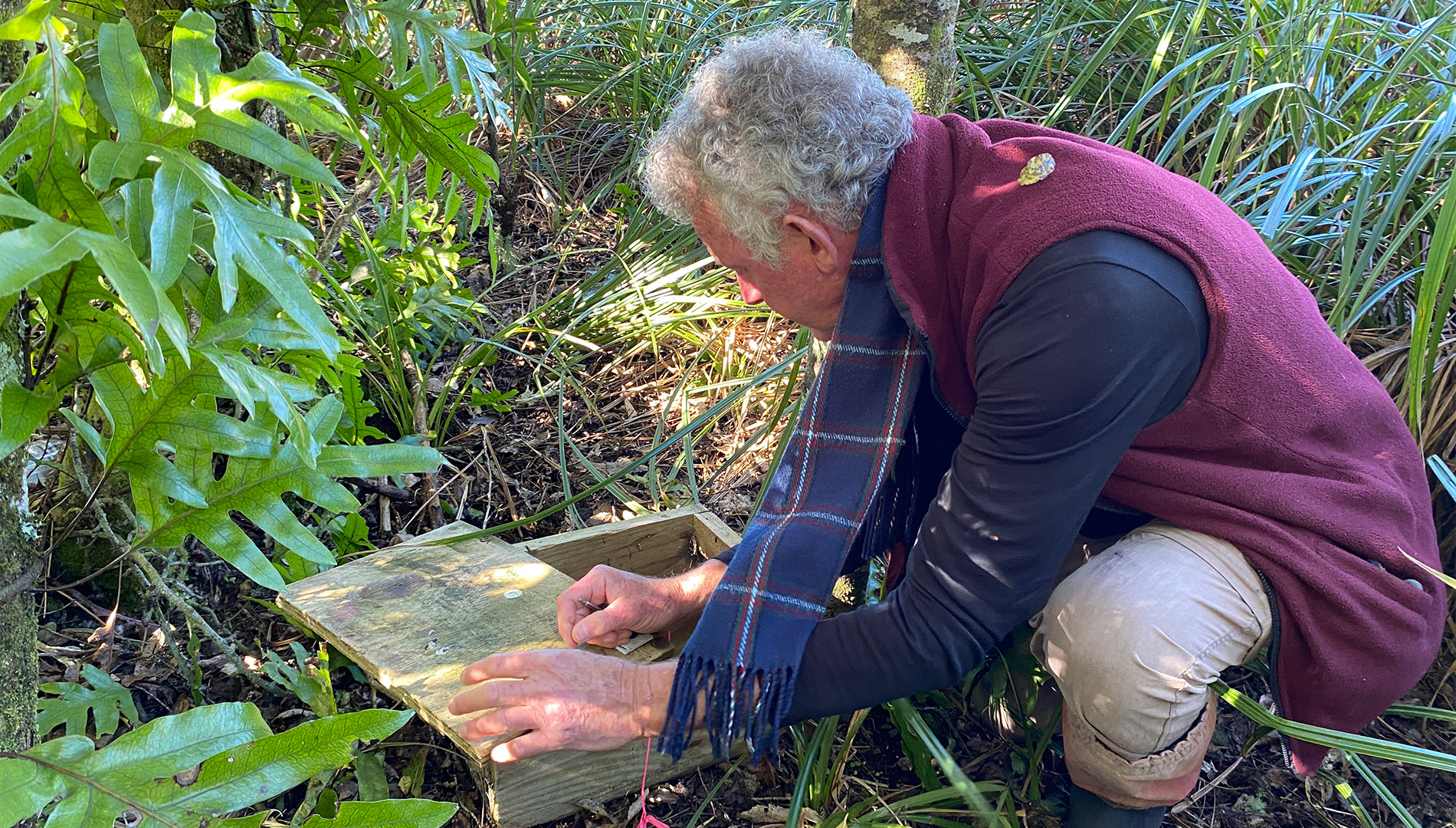"People come to the bay to listen to the dawn chorus because it’s so beautiful"
- Anthony Baynes

Anthony and Dennis with an information sign in Pukawa Bay
Strong and vibrant native bird song is attracting visitors to picturesque Pukawa Bay on the south-western side of Lake Taupō.
The richly forested slopes leading down to the bay seem to fairly teem with avian choruses and the varied chatter of native birds.
“People come to the bay to listen to the dawn chorus because it’s so beautiful,” says local resident and Pukawa Wildlife Management Trust volunteer Anthony Baynes.

Dennis readies traps for carrying into the forest
The trust and a dedicated team of volunteers have been working behind the scenes for decades to create the enriched natural environment we see today.
“We consider the level of birdsong as a key indicator of success and it’s a great joy for our community,” says Anthony.
Bird counts carried out by the trust have identified high numbers of korimako (bellbird), tūī and pīwakawaka (fantail), along with kererū (wood pigeon) and other birds.
The trust has been trapping in the local area since the early 2000s. Over the years, the operation has developed into a well-established trapping network of 25 trap lines with more than 500 traps in total covering around three-square kilometres. The trust estimates that their operations have removed some 25,000 pest animals out of the Pukawa Bay environment.

Dennis works on a trap in his workshop
Waikato Regional Council has supported the trust’s work through multiple grants over the years, including just over $4000 in the 2025 round of the Small Scale Community Initiatives Fund. This latest funding supports the purchase of new traps and lures, along with materials needed to build their own traps.
With about 20 members aged between 50-95 years, a core group of up to 10 volunteers regularly check some 15 trap lines. The pest animals targeted include rats, possums, mustelids (stoats, weasels and ferrets) hedgehogs and feral cats.
Most of the traps are DOC200 traps which are named after the standard mechanism inside. The mechanism is surrounded by a casing of wood and steel mesh. The group makes many of the casings on site and also repairs older traps. The trust also deploys A24 traps which are mounted on trees and a smaller number of AT220s, both of which are self-resetting.
Anthony—who checks traps while walking his pet dog--calculates that he puts in three-and-a-half thousand kilometres of walking each year.
“I enjoy checking the traps because I like being in nature and helping to support our local environment,” says Anthony.
“It’s not really an effort at all, because it’s about doing what I love.”
The trust also runs a native planting programme, spending about $3000 each year on plant stock. They also work to get rid of pest plants such as blackberry.
The group’s work in pest control and native planting supports the biosecurity and biodiversity of Pukawa Bay’s native species and ecosystems. By controlling pest animal numbers, for example, both native birdlife and plants have the space to thrive.
“We’re living in a paradise here and want to keep it that way,” says Dennis.
The trust’s pest control programme was among the first to set up around Lake Taupō, but there are now about 40 different pest trapping operations around the lake.
“We find the increased efforts have a flow on effect,” says Anthony.
“For example, another group is trapping immediately to the north of Pukawa Bay. As a result of their efforts, we are catching fewer pest animals in traps on our northern border which is good news,” says Anthony.
The trust also maintains good working relationships with the Department of Conservation, iwi and Taupō District Council.

